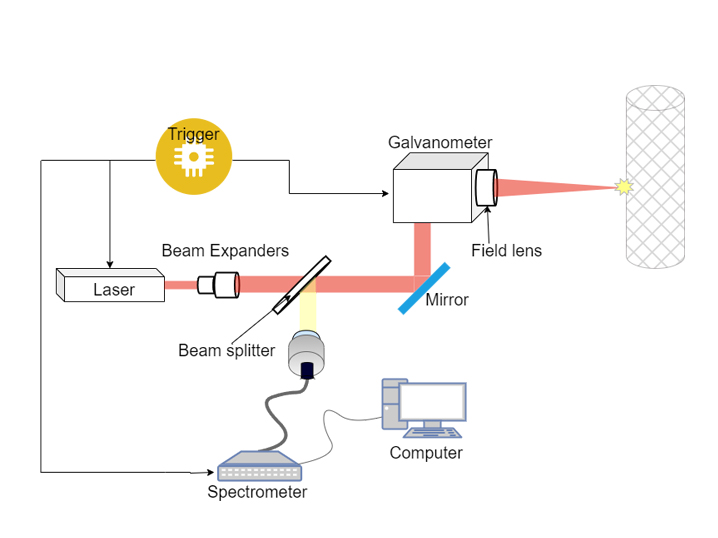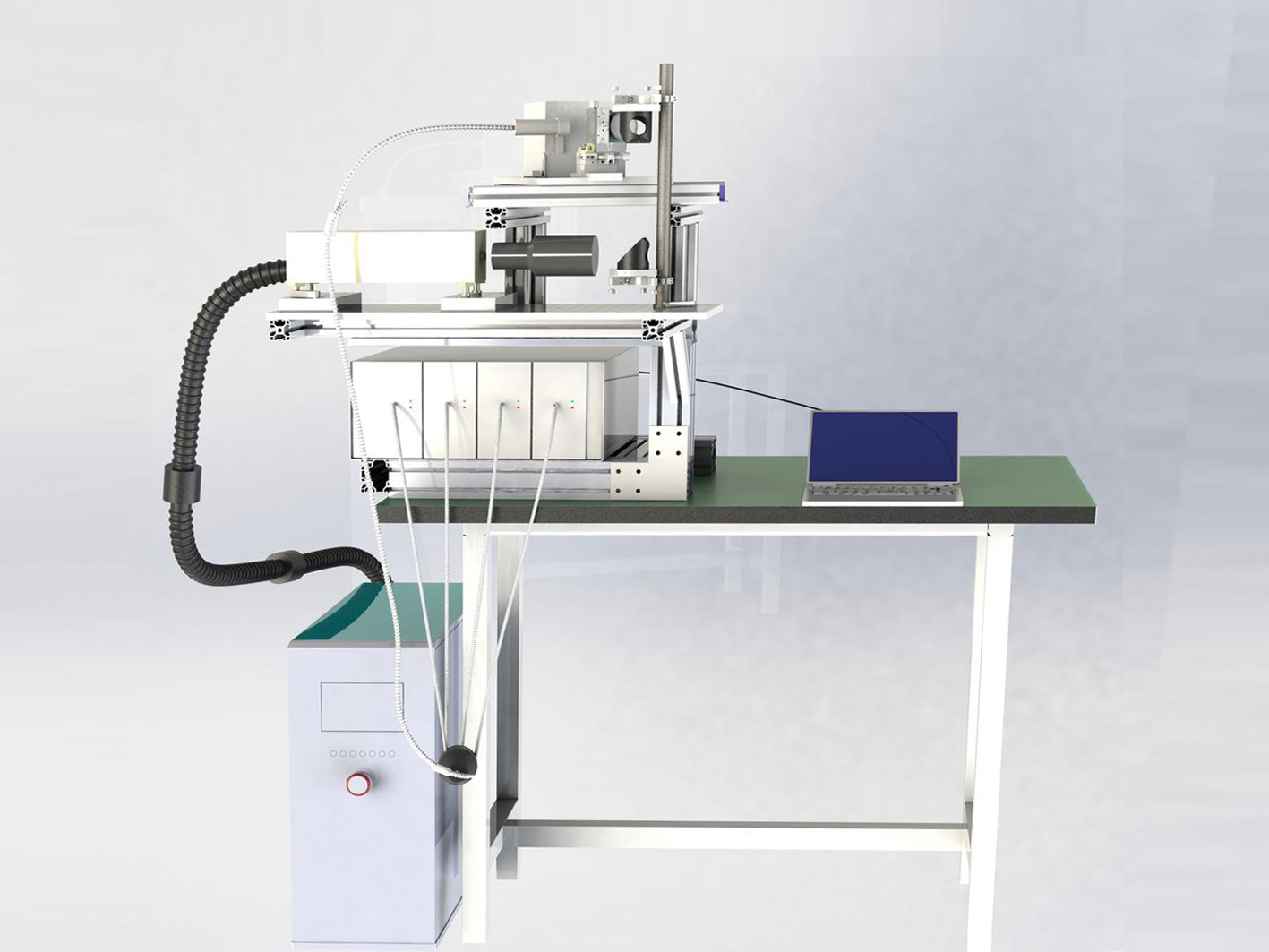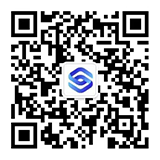



Laser Induced Breakdown Spectroscopy (LIBS) is a technique that involves focusing ultrashort-pulse laser beams onto a material surface to generate a plasma. The material emits characteristic spectral lines by which the elemental composition of the sample can be identified. This technique can be used for material identification, classification, and quantitative analysis.
Laser : Nd-YAG: 1064nm wavelength,100mJ/pulse
Frequency: 1-20 Hz, pulse width: 10 ns,with water-cooling system(can also be configured with other parameters)
Spectrometer:Four-channel spectrometer(can also be configured with other parameters)
Channel 1: Wavelength range 400-489 nm, average spectral resolution 0.13-0.17 nm;
Channel 2: Wavelength range 487-613 nm, average spectral resolution 0.20-0.29 nm;
Channel 3: Wavelength range 611-715 nm, average spectral resolution 0.20-0.29 nm;
Channel 4: Wavelength range 611-715 nm, average spectral resolution 0.09-0.11 nm.
Diagnostic spot size:Less than 1 mm
Detection distance:10cm-2m
Detection range:A range of Φ0.7 m (this range may be reduced when the detection distance is shorter).
Software control:Position control, trigger control, data acquisition control.
LIBS technology can be applied in various fields, including online analysis of steel composition, coal quality analysis, space exploration, environmental and waste monitoring, cultural heritage identification, industrial process control,detection, and geochemical analysis.
In most conventional applications, the detection limits of LIBS systems for most elements can reach 10 ppm - 100 ppm.
The specific samples to be tested, the types of elements, as well as the selection and configuration of the laser and spectrometer, will affect the actual detection limits.
Typically, the detection limits for elements such as Li, Be, B, Na, Mg, Al, K, and Ca are >10 ppm; for elements like Ti, V, Cr, Mn, Fe, Co, Ni, Cu, Zn, and Mo, the limits are >100 ppm; for elements including C, N, O, P, and Si, the limits are >200 ppm; and for elements such as F, Cl, Br, and S, the limits are >5000 ppm.
In quantitative analysis, the relative standard deviation of LIBS measurement results is in the range of 3% - 5%.
